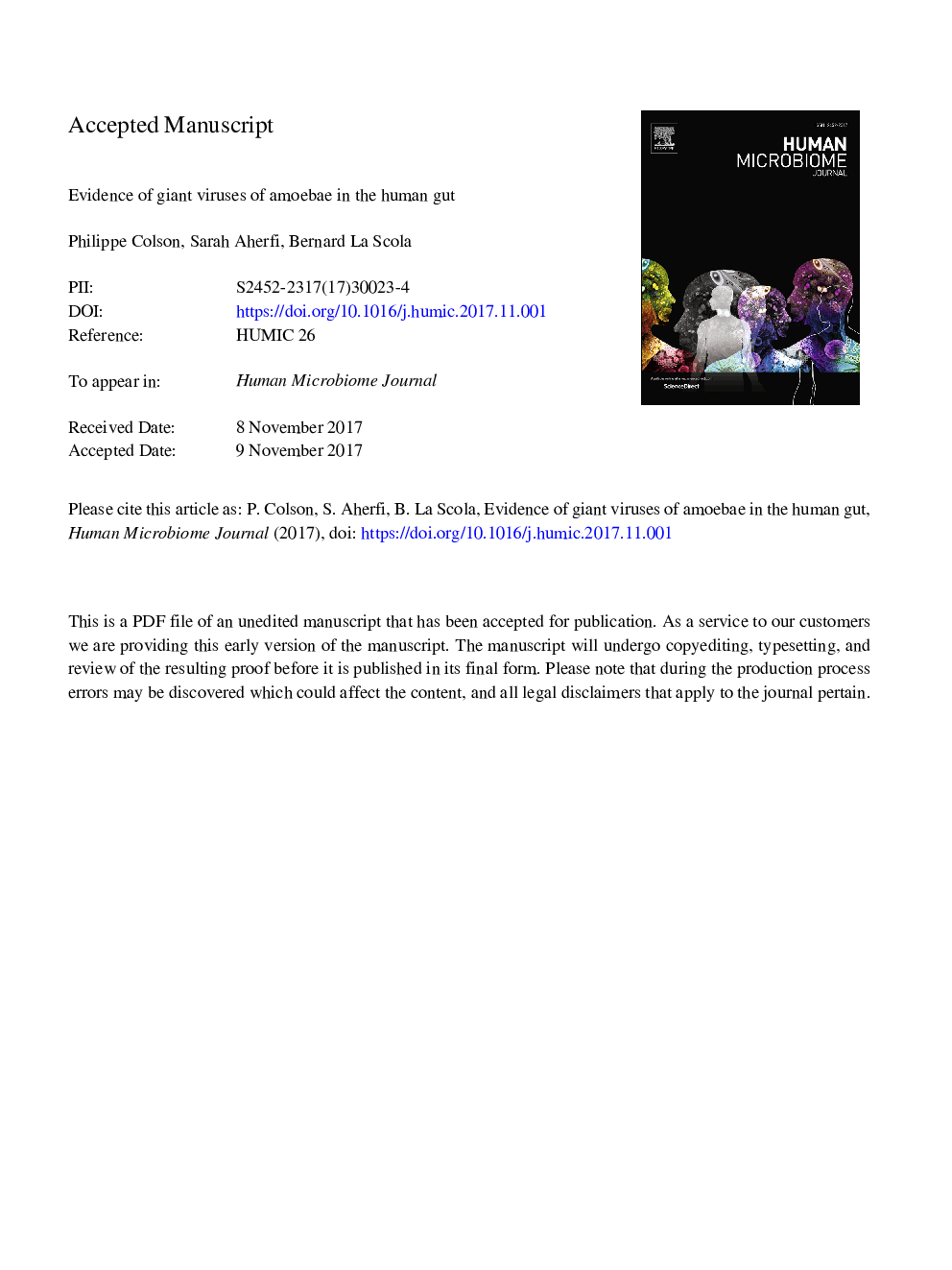| Article ID | Journal | Published Year | Pages | File Type |
|---|---|---|---|---|
| 8745615 | Human Microbiome Journal | 2017 | 26 Pages |
Abstract
The study of the gut microbiome and virome has developed dramatically since the beginning of the 21st century. Nevertheless, giant viruses of amoebae, which are emerging viruses first described in 2003, have been largely neglected in virome investigations because they are bigger than classical viruses and devoid of ribosomal DNA. Dozens of these viruses have been isolated between 2003 and 2016, which were classified in at least 7 lineages including 2 new recognized virus families. These viruses challenge previous paradigms on viruses and share many characteristics with intra-cellular microbes. We reviewed here findings about the presence of these giant viruses of amoebae in the human gut, whose microbiota has been extensively studied during the last decade. Contrasting with what is currently done for classical viruses, many studies investigating the presence of giant viruses of amoebae have been conducted by culture on amoebae in first intention. To date, a mimivirus and a marseillevirus have been isolated from human feces, which indicates that they can still replicate after a stay in the gut. Besides, sequences related to giant viruses of amoebae have been detected in several metagenomes generated from human feces. Water is a likely source of human exposure to giant viruses of amoebae. The clinical or biological significance of the presence of these viruses in the human gut remains to be determined. Taken together, available findings warrant searching more extensively and systematically for giant viruses of amoebae in the human gut, along with in other body sites.
Related Topics
Life Sciences
Immunology and Microbiology
Microbiology
Authors
Philippe Colson, Sarah Aherfi, Bernard La Scola,
